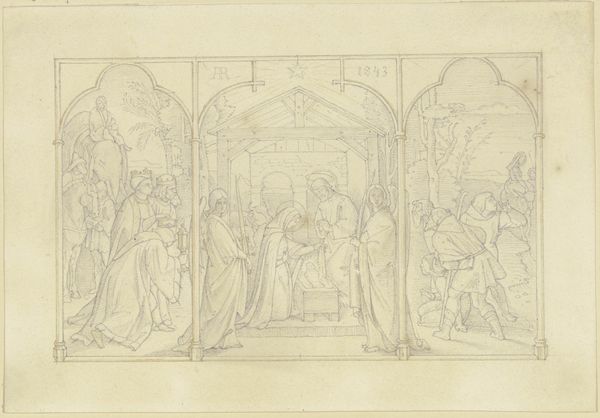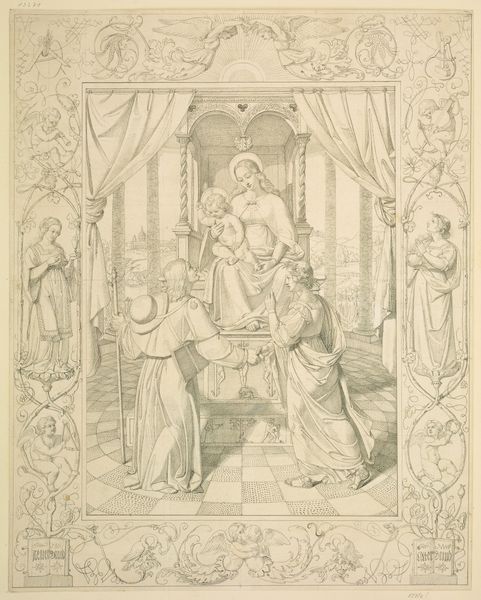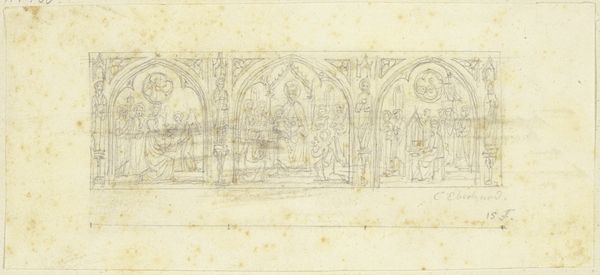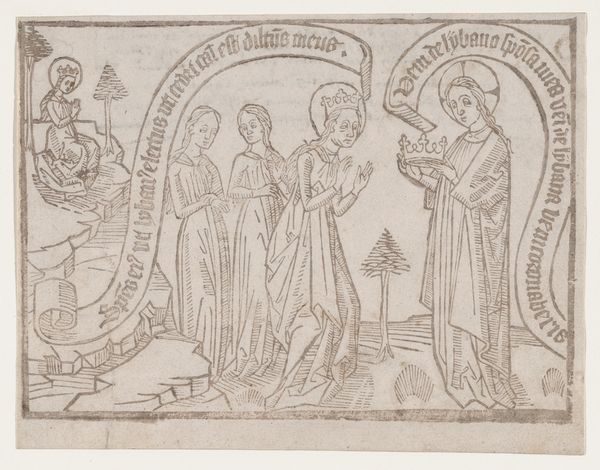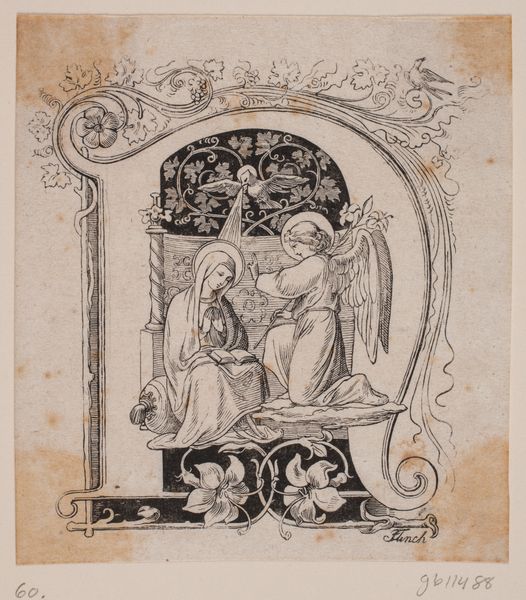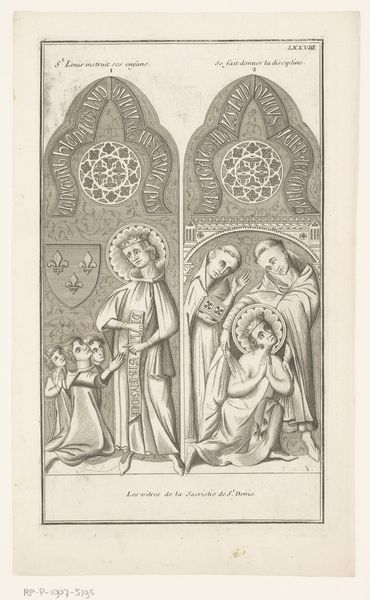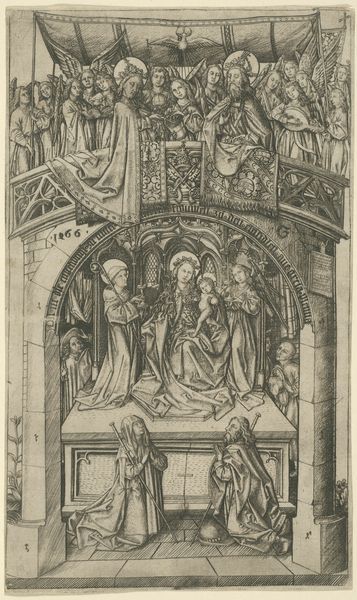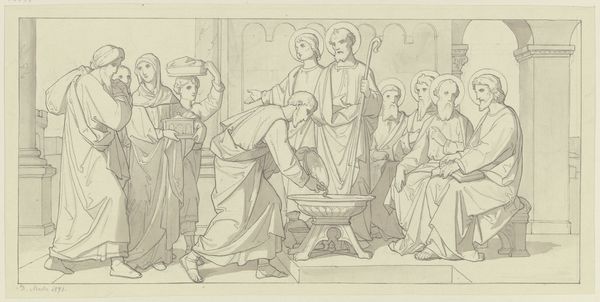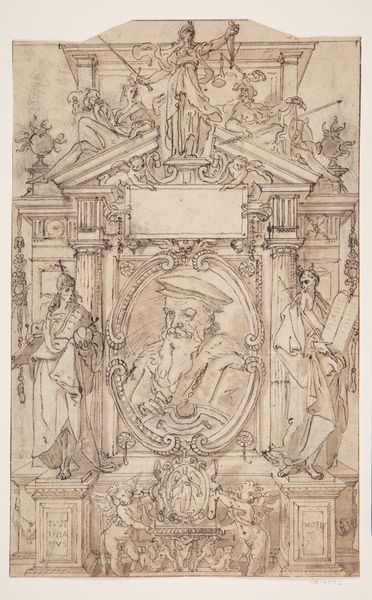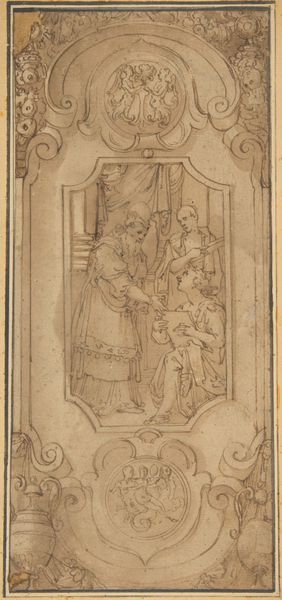
drawing, pencil
#
portrait
#
drawing
#
16_19th-century
#
medieval
#
etching
#
figuration
#
11_renaissance
#
pencil
#
pencil art
Copyright: Public Domain
Curator: Here we have Gustav Heinrich Naeke’s drawing "Madonna mit dem Evangelisten Lukas und der Heiligen Cäcilia" which is on display here at the Städel Museum. Editor: Wow, there is a gentleness here, a kind of understated grace, you know? I'm getting a medieval illuminated manuscript kind of vibe with this almost translucent surface of pencil on paper, or possibly even an etching. There is definitely a reverence captured within. Curator: Indeed, it resonates with artistic traditions going as far back as the Middle Ages and then even looking towards the Renaissance’s reinvigoration of classical styles. As the title reveals, Naeke assembles the Virgin Mary with the evangelist Luke and Saint Cecilia within an architectural setting. The decision to place Luke and Cecilia flanking Mary seems intended to offer a commentary about what it means to create devotional iconography within religious practices, especially considering each figure’s historical significance in art history. Editor: Yes, Luke as an artist, which is cool. Cecilia as a musician—like two forms of devotion being performed, documented, venerated? They both give the central figure even more substance, context. The architecture frames not only them, but how we should be seeing and experiencing the divine represented within, through creativity, you know? A meta artwork in a way. Curator: Certainly. Moreover, the architectural design around each figure echoes religious tropes as an organizing feature and an artistic medium for the faithful across the Christian world. Through his deliberate gestures and the chosen materials, the artist seems to highlight art's relationship to religious power and sacred practice. Editor: I love how, despite the overall solemnity, there's almost a dreamlike lightness to it. Like a whispered prayer, this artwork gently guides our eyes through this historical intersection of religion and art-making— almost like it is asking us about our relationship to faith-based art, now. What would that type of piece mean now in a world where everyone can be an artist, you know? Curator: Perhaps in the current moment this drawing is attempting to offer an accessible and inclusive experience for interrogating past social hierarchies and the role of art making within identity formation for folks of differing socio-political realities. Editor: Precisely. A meditation not just on faith, but the art that expresses it, across different timelines, rendered by one man, remembered now for a variety of people.
Comments
No comments
Be the first to comment and join the conversation on the ultimate creative platform.
